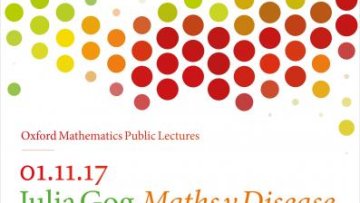16:00
Diffusion of particles with short-range interactions
Abstract
In this talk we consider a system of interacting Brownian particles. When diffusing particles interact with each other their motions are correlated, and the configuration space is of very high dimension. Often an equation for the one-particle density function (the concentration) is sought by integrating out the positions of all the others. This leads to the classic problem of closure, since the equation for the concentration so derived depends on the two-particle correlation function. We discuss two common closures, the mean-field (MFA) and the Kirkwood-superposition approximations, as well as an alternative approach, which is entirely systematic, using matched asymptotic expansions (MAE). We compare the resulting (nonlinear) diffusion models with Monte Carlo simulations of the stochastic particle system, and discuss for which types of interactions (short- or long-range) each model works best.



